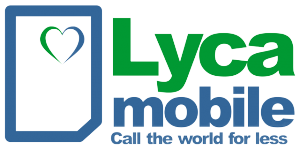The Impact of Performance Shoes on Athletic Performance and Injury Prevention

Proper footwear is a vital part of an athlete’s arsenal. It can help prevent injuries while allowing athletes to push themselves further.
Whether you’re a long-distance runner craving endurance or a basketball player searching for that explosive jump, the proper footwear is essential to your performance. Innovative features optimize performance and injury prevention.
Cushioning
Cushioning is one of the most critical aspects of performance shoes. It absorbs the impact forces when your feet hit the ground, reducing joint stress and preventing injuries. It also contributes to the uniform weight distribution over the foot, improving the comfort of your shoes.
Padded footwear empowers athletes to enhance running speed by optimizing the redistribution of lower leg muscle work from the heel to the forefoot. This results in decreased loading rates and heightened kinetic energy efficiency. Research indicates that running shoes with augmented midsole bending stiffness reduce loading rates and decrease ground reaction force in both the rear and forefoot. For those interested in exploring advanced cushioning options, Hoka One One offers a variety of choices. Visit https://www.retailmenot.com/view/hoka.com for a detailed look at their innovative and performance-focused running footwear offerings.
Moreover, the lightest shoes increase tibialis anterior (outer side of shin) activity, which prevents slapping of the foot on the ground during initial contact and lifts the foot at the ankle. This leads to a reduction in vGRFs and vertical loading rates, which significantly reduces running injury risk. The slapping of the foot on the floor increases stress in the shins and knees, which can lead to muscle damage. In contrast, the stiffest shoes lead to a higher level of vibration in the foot and ankle, which can contribute to discomfort and injury.
Support
Footwear plays a significant role in upholding musculoskeletal health and optimizing athletic performance. It is also a critical factor in preventing injuries. When athletes wear footwear designed for their sport, they can push themselves harder without putting unnecessary stress on their feet.
Athletes should rotate multiple pairs of shoes to prolong the life of each pair. This will prevent one shoe from wearing out sooner than the other and allow each pair to provide proper cushioning and support for the athlete.
To optimize the running shoe design, a runner must consider their foot type and how it interacts with the shoes. For example, runners with a supinated foot type should run in shoes with a heel-strike platform that enhances shock reduction at ground contact.
A few years ago, Nike unveiled a shoe that claimed to improve the runner’s efficiency by 4-5%. Although these results were primarily attributed to the specific conditions under which the shoe was tested, the impact of this discovery is still being debated.
Stability
A good athletic shoe will provide stability for your feet and ankles. This can help prevent overpronation (excessive inward rolling of the foot) and supination (excessive outward rolling), leading to pain and injuries such as shin splints or plantar fasciitis.
Stability can also come from the way a shoe is constructed. For example, a shoe with a stiffer midsole can help you maintain an optimal position as you run, improving your performance and reducing injury risk.
It’s also important to remember that shoes can only do so much. The best way to prevent injuries is to understand what’s causing them and ensure you’re correctly stretching and preparing for exercise.
Studies with running shoe constructions have found that varying the thickness of a shoe’s midsole can significantly affect several performance and injury variables. Thicker midsoles can provide remarkable cushioning effects and attenuate shock during impact but may decrease plantar sensations at touchdown. In addition, a firmer heel post in a shoe can reduce loading rates of the ankle, metatarsophalangeal joint, and Achilles tendon compared with softer midsoles.
Grip
Choosing the proper footwear for your sport is essential because poor-fitting shoes can increase your chances of sustaining injuries. These injuries may include stress fractures, plantar fasciitis, Achilles tendonitis, and ankle sprains.
Many athletic shoes have padding that cushions the feet and absorbs impact during exercise. However, this padding can wear down with continuous use. Consequently, athletes who use the shoes overly often risk developing flat feet.
Some people believe that runners with pronated feet need corrective “motion control” shoes to prevent injuries to their knees, ankles, and feet. There is some evidence that these shoes reduce injury, but there is also a lot of evidence that they don’t.
Footwear constructions like forefoot bending stiffness, midsole hardness and thickness, heel-toe drop, and crash pad substantially affect running biomechanics. However, further research on standard testing protocols is needed to identify optimal shoe constructions regarding performance-related variables and preventing injury. This includes developing optimal forefoot bending stiffness to improve running economy, attenuate shock during impacts, and decrease the Achilles tendon and metatarsophalangeal joint loading rate.
Durability
Footwear is a critical component of an athlete’s performance. Proper shoes are designed to support the foot and ankle, improve stability, and optimize energy transfer during movement. This helps prevent injury and fatigue of the lower leg and foot muscles.
Studies of running shoe construction have shown that various shoe features influence biomechanics. For example, the lightest shoes might increase tibialis anterior muscle (outer side of shin) activity, reduce slapping of the foot on the ground at first contact, and help lift the foot at the ankle. The heaviest shoes might increase semitendinosus and soleus muscle (calf muscles) activity to push the foot off the ground at the heel and during the stance phase of running.
A shoe with durable laces may also be a game-changer for athletes. Durable laces keep the shoe snug and prevent them from falling off during an important race or workout. This is why Gravity Defying Footwear is dedicated to developing and producing the best-in-class footwear that keeps athletes focused on their goals, not their equipment.





